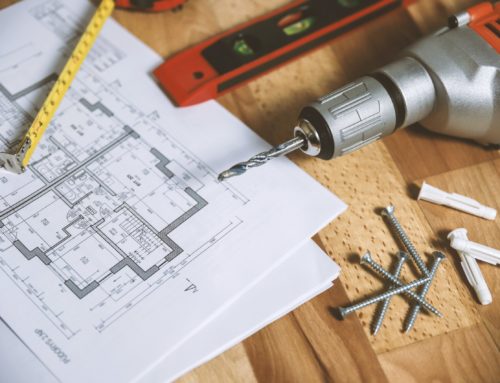I had the pleasure of sitting across from Dave Van Horn at dinner once. If you don’t know who he is, he is a big contributor on BiggerPockets and the de facto subject matter expert when it comes to notes. I’ve always been intrigued by it and sometimes when I am having a frustrating phone call with the contractors or have to go down to the planning office I start thinking I should get into something more hands-off like notes. For whatever reason I’ve never done anything with it. Maybe because it’s a little intangible, you’re really talking about a piece of paper or maybe because I’m hands on and like to see the fruit of my labor in real life. Either way I was really glad we got two experts, Ben Cote of Resolution Capital Management and Bobby Sharma of BetterTurnkeys.com to share their knowledge on the subject starting from scratch.
What is a note?
A note is essentially an IOU or a loan that spells out the interest, length, and terms. This loan is secured by a deed of trust or what most of us commonly called a mortgage. This is treated as a lien on the property that in case of default the lender can foreclose on the property. If you’re investing in notes, make sure you have the original note in order to foreclose because it could present a lot of problems if you don’t.
Speaking of foreclosure, the country is divided between judicial vs non-judicial states. In judicial states the foreclosure process takes much longer as in years. The lender would have to file a lawsuit and that would have to go through court, which is part of the reason you might hear there are still tons of foreclosures in the pipeline in Florida or New York. Non-judicial states like California you have a third party that holds the legal title and the process is usually 6 months or in the case of Texas even quicker than that.
What are the different kinds of notes?
There are different classifications of notes:
- Residential vs commercial
- 1st vs 2nd position
- Performing, non-performing, vs re-performing
Residential and commercial are the same as what you think of properties. There are notes for regular 1-4 units residential properties and commercial notes for 5 units and above or retail, industrial properties. 1st or 2nd position simply indicate the order the lender have claim on the property. If you’re in the second position you’d have to wait for the lender in the first position to be paid first before you can get paid. If the borrower is behind on payments the 2nd position’s claim could potentially get wiped out. Performing note means the borrower is up to date on their payments and non-performing means they’re behind. If the note is non-performing, the borrower can workout some kind of payment plan or settlement with lender to get to re-performing status.
Commercial notes have less laws to protect them therefore they can be quicker to settle through court. They are definitely more number intensive though as you will have to evaluated all aspect of the property and business to assess if ultimately the borrower can make the payments.
There are also fixed-rate, adjustable-rate, interest only, or negative amortization loans. For the purpose of this post, we won’t be diving too much into them that much just to know they affect the monthly payments depending on the terms.
 Reasons notes become non-performing
Reasons notes become non-performing
There are five main reasons why a borrower would fall behind on their payments:
- Loss or reduction of income
- Illness or death – if you’re sick or dead you can’t work and generate income
- Separation or divorce
- Natural disaster – Hurricane hits and the borrow moved or just flat out abandoned the home
- Negative equity – This is what we commonly call short sale or REO (or real estate owned, where the lender like the banks own the property) where what the borrower owes is more than what the property is worth so they’ll strategically default and walk away from the property.
What to do when a note is not performing
The first stage when a note becomes non-performing is to contact the borrower. You can send out notice of default by mail first. If they ignore that you try to initiate contact via phone calls. If they blow you off completely then start the mitigation process.
Usually borrowers who are behind will stall or find excuses until they can’t anymore. As a last resort they’ll file for bankruptcy. Be ready for that. Maybe the court will accept it, maybe they won’t. If they don’t that’s when the borrow will finally make one last plea to re-negotiate.
When all else fails, that’s when the court will auction off the property. This is what we common think of about buying properties at courthouse steps auction. After that step all existing recorded liens will be wiped out.
How to find, buy, and manage notes
There are different exchanges where investors can go find notes to buy such as FCI Exchange or PPR (Dave Van Horn’s company). Depending on the classification we mentioned before, you can expect different discounts off of par value.
Be sure to research about unpaid balances or UPB, liens, and back taxes. And as we mentioned at the beginning, get the original note!
Your mileage might be different or the market shifts, but for non-performing notes you might expect something like 40-60 cents on the dollar, and 80 cents on the dollar for 1st position performing notes. For 2nd position you might be looking at 10-20 cent and around 60 cent for non-performing and performing notes, respectively according to our panelists.
Notes might be kind of opaque or hard to wrap your head around. Just remember in accounting, asset and liability have to balance. In this case, another person’s liability becomes your asset, and that asset can produce income and cashflow for you. Feel free to reach out to our panelists or check out some of the links and resources we’ve included in this post to read up and educate yourself further.





